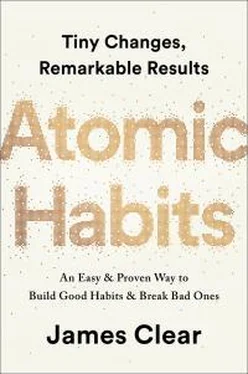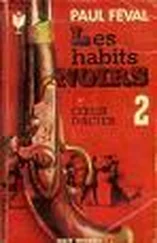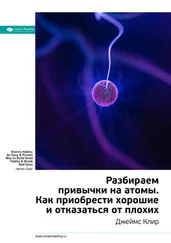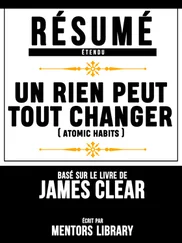voter turnout increases :David W. Nickerson and Todd Rogers, “Do You Have a Voting Plan? Implementation Intentions, Voter Turnout, and Organic Plan Making,” Psychological Science 21, no. 2 (2010): 194–199.
Other successful government programs :“Policymakers around the World Are Embracing Behavioural Science,” The Economist , May 18, 2017, https://www.economist.com/news/international/21722163-experimental-iterative-data-driven-approach-gaining-ground-policymakers-around.
people who make a specific plan for when and where :Edwin Locke and Gary Latham, “Building a Practically Useful Theory of Goal Setting and Task Motivation: A 35-Year Odyssey,” American Psychologist 57, no. 9 (2002): 705–717, doi:10.1037//0003–066x.57.9.705.
hope is usually higher :Hengchen Dai, Katherine L. Milkman, and Jason Riis, “The Fresh Start Effect: Temporal Landmarks Motivate Aspirational Behavior,” PsycEXTRA Dataset , 2014, doi:10.1037/e513702014–058.
writer Jason Zweig noted :Jason Zweig, “Elevate Your Financial IQ: A Value Packed Discussion with Jason Zweig,” interview by Shane Parrish, The Knowledge Project , Farnam Street, audio, https://www.fs.blog/2015/10/jason-zweig-knowledge-project.
many ways to use implementation intentions :For the term habit stacking , I am indebted to S. J. Scott, who wrote a book by the same name. From what I understand, his concept is slightly different, but I like the term and thought it appropriate to use in this chapter. Previous writers such as Courtney Carver and Julien Smith have also used the term habit stacking , but in different contexts.
The French philosopher Denis Diderot :“Denis Diderot,” New World Encyclopedia , http://www.newworldencyclopedia.org/entry/Denis_Diderot, last modified October 26, 2017.
acquired a scarlet robe : Encyclopædia Britannica , vol. 8 (1911), s.v. “Denis Diderot.” Diderot’s scarlet robe is frequently described as a gift from a friend. However, I could find no original source claiming it was a gift nor any mention of the friend who supplied the robe. If you happen to know any historians specializing in robe acquisitions, feel free to point them my way so we can clarify the mystery of the source of Diderot’s famous scarlet robe.
“no more coordination, no more unity, no more beauty” :Denis Diderot, “Regrets for My Old Dressing Gown,” trans. Mitchell Abidor, 2005, https://www.marxists.org/reference/archive/diderot/1769/regrets.htm.
The Diderot Effect states :Juliet Schor, The Overspent American: Why We Want What We Don’t Need (New York: HarperPerennial, 1999).
which was created by BJ Fogg :In this chapter, I used the term habit stacking to refer to linking a new habit to an old one. For this idea, I give credit to BJ Fogg. In his work, Fogg uses the term anchoring to describe this approach because your old habit acts as an “anchor” that keeps the new one in place. No matter what term you prefer, I believe it is a very effective strategy. You can learn more about Fogg’s work and his Tiny Habits Method at https://www.tinyhabits.com.
“One in, one out” :Dev Basu (@devbasu), “Have a one-in-one-out policy when buying things,” Twitter, February 11, 2018, https://twitter.com/devbasu/status/962778141965000704.
CHAPTER 6
Anne Thorndike :Anne N. Thorndike et al., “A 2-Phase Labeling and Choice Architecture Intervention to Improve Healthy Food and Beverage Choices,” American Journal of Public Health 102, no. 3 (2012), doi:10.2105/ajph.2011.300391.
choose products not because of what they are :Multiple research studies have shown that the mere sight of food can make us feel hungry even when we don’t have actual physiological hunger. According to one researcher, “dietary behaviors are, in large part, the consequence of automatic responses to contextual food cues.” For more, see D. A. Cohen and S. H. Babey, “Contextual Influences on Eating Behaviours: Heuristic Processing and Dietary Choices,” Obesity Reviews 13, no. 9 (2012), doi:10.1111/j.1467–789x.2012.01001.x; and Andrew J. Hill, Lynn D. Magson, and John E. Blundell, “Hunger and Palatability: Tracking Ratings of Subjective Experience Before, during and after the Consumption of Preferred and Less Preferred Food,” Appetite 5, no. 4 (1984), doi:10.1016/s0195–6663(84)80008–2.
Behavior is a function of the Person in their Environment :Kurt Lewin, Principles of Topological Psychology (New York: McGraw-Hill, 1936).
Suggestion Impulse Buying :Hawkins Stern, “The Significance of Impulse Buying Today,” Journal of Marketing 26, no. 2 (1962), doi:10.2307/1248439.
45 percent of Coca-Cola sales :Michael Moss, “Nudged to the Produce Aisle by a Look in the Mirror,” New York Times, August 27, 2013, https://www.nytimes.com/2013/08/28/dining/wooing-us-down-the-produce-aisle.html?_r=0.
People drink Bud Light because :The more exposure people have to food, the more likely they are to purchase it and eat it. T. Burgoine et al., “Associations between Exposure to Takeaway Food Outlets, Takeaway Food Consumption, and Body Weight in Cambridgeshire, UK: Population Based, Cross Sectional Study,” British Medical Journal 348, no. 5 (2014), doi:10.1136/bmj.g1464.
The human body has about eleven million sensory receptors :Timothy D. Wilson, Strangers to Ourselves: Discovering the Adaptive Unconscious (Cambridge, MA: Belknap Press, 2004), 24.
half of the brain’s resources are used on vision :B. R. Sheth et al., “Orientation Maps of Subjective Contours in Visual Cortex,” Science 274, no. 5295 (1996), doi:10.1126/science.274.5295.2110.
When their energy use was obvious and easy to track :This story was told to Donella Meadows at a conference in Kollekolle, Denmark, in 1973. For more, see Donella Meadows and Diana Wright, Thinking in Systems: A Primer (White River Junction, VT: Chelsea Green, 2015), 109.
the stickers cut bathroom cleaning costs :The actual estimate was 8 percent, but given the variables used, anywhere between 5 percent and 10 percent savings annually is a reasonable guess. Blake Evans-Pritchard, “Aiming to Reduce Cleaning Costs,” Works That Work , Winter 2013, https://worksthatwork.com/1/urinal-fly.
sleeping . . . was the only action that happened in that room :“Techniques involving stimulus control have even been successfully used to help people with insomnia. In short, those who had trouble falling asleep were told to only go to their room and lie in their bed when they were tired. If they couldn’t fall asleep, they were told to get up and change rooms. Strange advice, but over time, researchers found that by associating the bed with ‘It’s time to go to sleep’ and not with other activities (reading a book, just lying there, etc.), participants were eventually able to quickly fall asleep due to the repeated process: it became almost automatic to fall asleep in their bed because a successful trigger had been created.” For more, see Charles M. Morin et al., “Psychological and Behavioral Treatment of Insomnia: Update of the Recent Evidence (1998–2004),” Sleep 29, no. 11 (2006), doi:10.1093/sleep/29.11.1398; and Gregory Ciotti, “The Best Way to Change Your Habits? Control Your Environment,” Sparring Mind, https://www.sparringmind.com/changing-habits.
Читать дальше




![Джеймс Клир - Атомные привычки [Как приобрести хорошие привычки и избавиться от плохих]](/books/403243/dzhejms-klir-atomnye-privychki-kak-priobresti-horosh-thumb.webp)



